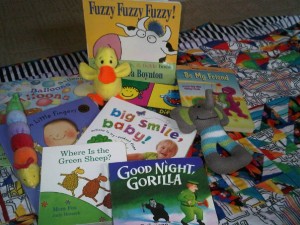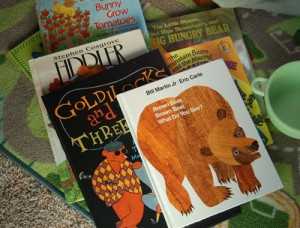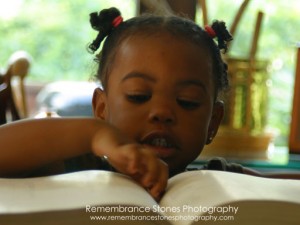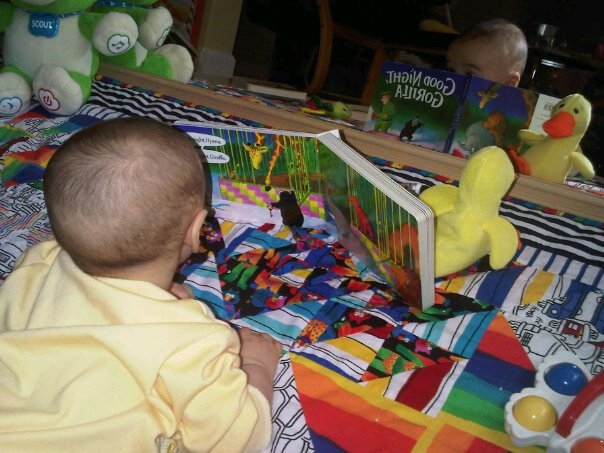Books 4 Babes


It’s never too early to share books with your baby or toddler. Babies love stories, pictures and rhymes, and toddlers do, too!
Here are some tips for sharing books.
- Find a comfortable place to sit.
- Hold the book so your child can see the pages.
- Make it exciting- use expression in your voice.
- Vary the pace of your reading, slow or fast.
- Ask a few questions about the pictures and ideas.
- Let your child turn the page of the book.
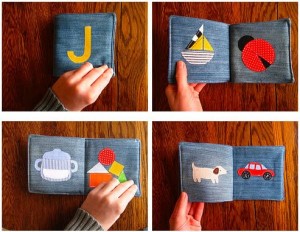
Sharing books can take place anywhere and at anytime. Have a book on hand so you can take advantage of standing in line, waiting for the bus or any time when you’re just waiting. It’s also nice to have a special time set aside for reading such as just before naps, right after meals or at bedtime. I love to read to children every where at the park,in a car, bathtime. Here are some of my favorites books to read to your children.
- Babies on the Go- Ashman, Linda (2003)
- Big Fat Hen- Baker, Keith (1994)
- My Car- Barton, Byron (2001)
- Little Gorilla- Bornstein, Ruth (1976)
- Busy Fingers- Bowie, C.W. (2003)
- The Very Hungry Caterpillar- Carle, Eric (1979)
- Sleepytime Rhyme- Charlip, Reny (1999)
- Gossie- Dunrea, Oliver (2002)
- Eyes, Nose, Fingers, and Toes: A First Book About You- Hindley, Judy (1999)
- Brown Bear, Brown Bear, What Do You See?-Martin, Bill, Jr





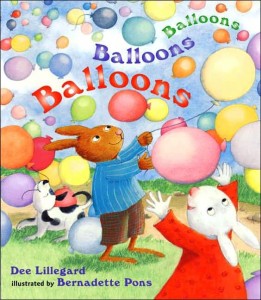
Since an infant’s vision is still developing, choose books with little or no text and big, high-contrast pictures. Also consider books with interactive stuff, such as puppets, mirrors, or peepholes. The more ways you both have to enjoy a book, the better. If you’d like, read to your baby from grown-up books or magazines too. Comprehending the words isn’t really the point with babies this young. For infants, reading is about the tone of your voice and cuddling up to you.

7 to 12 months:
Halfway through their first year, babies may begin to grasp some of the words read to them. The most meaningful words are the names and things from their everyday life — words like “doggy,” “mommy,” “daddy,” “milk,” or “bottle.”
Books with just one object or person per age are best; hearing you name something he recognizes reinforces your baby’s vocabulary and slowly helps him realize that illustrations stand for real things. Point to the pictures he shows interest in. And act out what you read with your face, hands, and voice. Let the baby babble back to you in return. This “conversation” helps him learn to take turns and teaches him about focusing on the same thing as someone else.
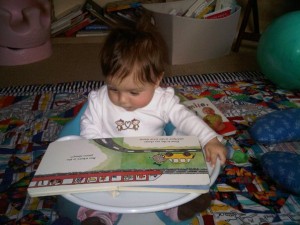
One more tip:
Because babies this age tend to be hard on their playthings, stick mostly to board books, which can take rough handling and even chewing. Cloth or vinyl books are good too, though turning the pages can be trickier for a baby.
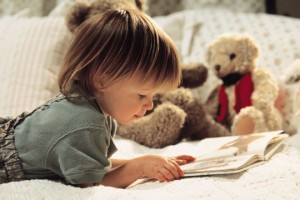

Toddler
Because they are transitioning from one type of “lifestyle” to another, toddlers can be thought of as the “adolescents” of early childhood. They are in a transitional state between babyhood and childhood. Toddlers are no longer dependent babies, and yet they do not have the personalities or the thought processes of a school age child. They are beginning to seek independence, yet they require caregiver security. They are rebellious, yet they desire caregiver approval. They are experiencing pre-school puberty! Toddlers are curious, information gatherers. They are explorers and experimenters. They learn by exploring the environment and manipulating objects. They rarely play with other toddlers. They play with objects. Much like the education of an older child should include appropriate books and other resource materials, the learning environment of toddlers must contain carefully selected toys, props, and play structures. The following play areas and props encourage toddler actions.
